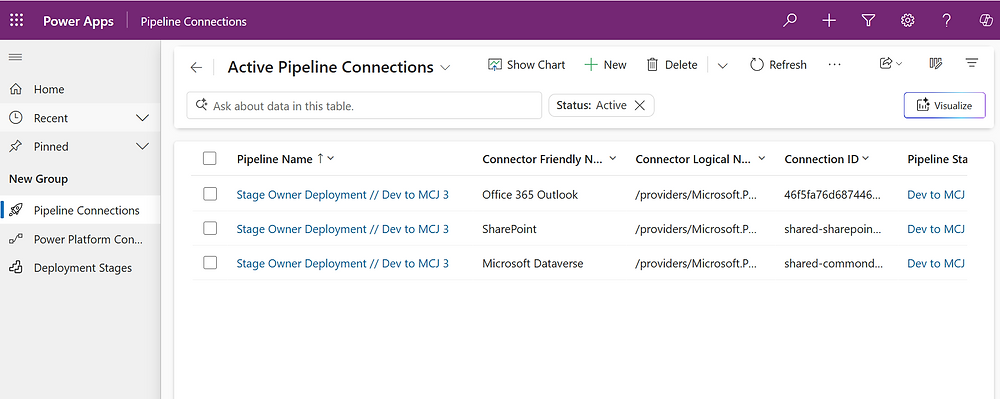Now Reading: Microsoft vs. its Partners
-
01
Microsoft vs. its Partners
Microsoft vs. its Partners
 The recent shift to cloud technologies, has placed Microsoft at odds with many of its long-standing partners. It’s really amazing when you think about it. I do not recall ever seeing a ship the size of Microsoft, so quickly turn on a dime and steam ahead in a whole new direction like they did with cloud… but it happened.
The recent shift to cloud technologies, has placed Microsoft at odds with many of its long-standing partners. It’s really amazing when you think about it. I do not recall ever seeing a ship the size of Microsoft, so quickly turn on a dime and steam ahead in a whole new direction like they did with cloud… but it happened.
Let’s face it, Google and Salesforce.com were kicking Microsoft’s ass, and in classic Microsoft style, they were late to the cloud party. But once the giant woke up, they barreled down the cloud path like it was their idea. For a company like Microsoft, who has historically been dependent on their partner channel, this clearly presented some problems. Microsoft may have turned the ship hard to starboard, but most of their thousands of partners continued straight and shot right off the stern. It would be akin to Ford telling their dealer network they were going to stop making cars and start making boats. Almost all of Microsoft’s partners had been making a living for years selling the company’s flagship products, Windows Server, and all the other server products as well as Office. In addition they made a pretty penny selling the hardware that these systems ran on and of course setting all that up and keeping it all running. It has been a highly profitable model ever since client/server computing was introduced. It should not have been unexpected then, when Microsoft said “sell our cloud instead” many of the partners balked. For most partners, “services” represented a small fraction of their revenue, most of their revenue came from hardware and license sales and support. How were they supposed to fill this hole in their revenue if they moved to selling Microsoft’s cloud?
For three years now, Microsoft has been begging their partners to get on-board, “the cloud is the future, we will be the leaders, there is much money to be made”. But change is hard. At Forceworks, we were lucky, as a former Salesforce.com consulting practice, “services” always represented the bulk of our revenue, so our business model has remained unchanged, we just switched platforms. Microsoft is obviously correct in their assertions, the cloud is the future and they have bet the farm on it. Over the past couple of years some partners have peeled away from their determined paths to follow Microsoft, but others, particularly the larger partners, those who face the biggest revenue hole, have pressed forward in a different direction or even turned hard to port.
Microsoft has historically sold their products not only to businesses through partners, but also to other companies that would host Microsoft products on their own infrastructure and offer these as services to businesses. Exchange was probably the biggest example. Fortunes were made by companies offering Exchange email, running on their servers instead of their customer’s. Then along comes Office 365. If you do not want to run Exchange on premise, (and who would?), in addition to partner hosted offerings, you could now get hosted Exchange directly from Microsoft. With a flip of the cloud switch, Microsoft became direct competition to their hosting partners. To add insult to injury, Microsoft threw in more stuff, (Lync and SharePoint) and offered it all at a lower cost. The past couple of years, Wall Street has not been kind to the large hosting partners that were once darlings. You can’t get much more disruptive than cannibalization.
And then we have the Dynamics family, and Dynamics CRM in particular. Not long after the launch of Office 365, Microsoft moved their enterprise CRM product up to the cloud also. Dynamics CRM had always been a monster of a program, complex and expensive to install on-premise and therefore limited to large organizations with deep pockets. A small percentage of partners had built very large organizations around Dynamics alone. Microsoft Dynamics CRM Online, was not getting much love from Microsoft in the shadow of the success of Office 365 and the promise of Azure, but many Dynamics partners saw the writing on the wall. Microsoft had successfully convinced many businesses that the cloud was the way to go for email, documents and communications, it was only a matter of time before they focused their attention on CRM. Many Dynamics partners scrambled to figure out how they would exist in this brave new world, where Microsoft was going to convert a large swath of their revenue, into recurring revenue for Microsoft. Ironically what wreaked havoc for the Exchange Hosters, some partners viewed as possible salvation… Partner Hosted CRM. Not that Partner Hosted CRM is new, but the move towards it has accelerated, in the last year particularly.
Partner Hosted CRM, solves a lot of problems for a partner. Since hosted CRM is basically on-premise CRM installed on virtual machines, it makes use of their vast knowledge of infrastructure and configuration (skills that are not relevant to Dynamics CRM Online). The recurring revenue can now accrue to the hosting partner instead of Microsoft, Microsoft still collects for the SPLA licenses and the customer gets the “in-the-cloud” CRM that they are increasingly asking for. So everybody should be happy right? Not so fast. Microsoft just tripled their internal target for Dynamics CRM Online, on the heels of not really meeting their much lower target last year. On-Premise, or Partner Hosted does not impact this new number. Overnight, Dynamics CRM Online went from the red-headed stepchild, to a full third pillar of Microsoft Cloud Solutions joining Office 365 and Azure as equal in importance. As Microsoft throws its weight behind generating demand for Dynamics CRM Online, in a similar fashion to what they did to turn Office 365 into the company’s largest product in history, they will no doubt be creating interest in Dynamics CRM “in the cloud”. A large portion of this newly created demand will be co-opted by partners offering hosted CRM. You have to expect that Microsoft is not just going stand by and watch this “conversion” happen.
We are fortunate to be among a small number of partners who are goal-aligned with Microsoft. As a “born in the cloud” partner, we certainly had an advantage; bringing an in-depth understanding of their biggest external competitor has not hurt either. But for Microsoft, and this new CRM Online effort, Salesforce.com is no longer their biggest competitor, it is their own partners who are offering hosted CRM. I expect to see some major changes to SPLA licensing this year, if not its total elimination. A quick look back at what happened to Exchange hosting partners, should be illustrative. And then we have “Rainier” on the horizon. This is the roadmap project to move the Dynamics ERP platforms to Microsoft’s cloud, this should scare the hell out of a whole other segment of ERP partners and hosting companies who specialize in GP, AX, NAV and SL.
My advice to customers today, while self-serving, I do believe to be true: Microsoft wants you in their cloud, not somebody else’s. Going somewhere else is putting your organization at risk; the risk of whatever fallout may result from Microsoft’s eventually dealing with their partner/competitors. Regardless of what you may hear to the contrary, the safe bet is obviously Dynamics CRM Online.
One thing is for sure, it is going to be an interesting year…
The post Microsoft vs. its Partners first appeared on Steve Mordue MVP.
Original Post https://stevemordue.com/microsoft-vs-its-partners/?utm_source=rss&utm_medium=rss&utm_campaign=microsoft-vs-its-partners















